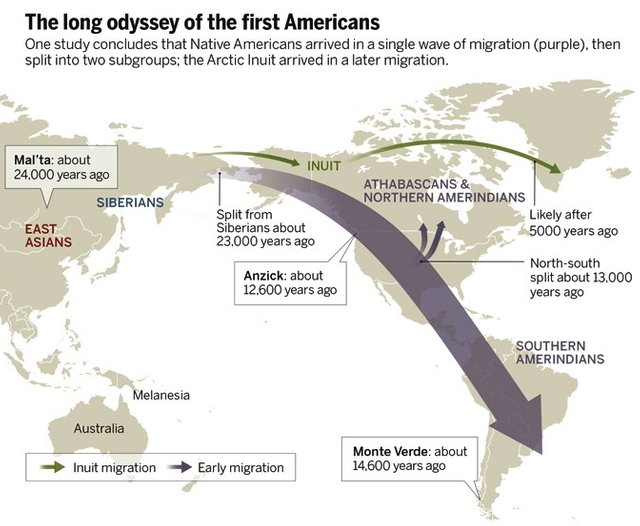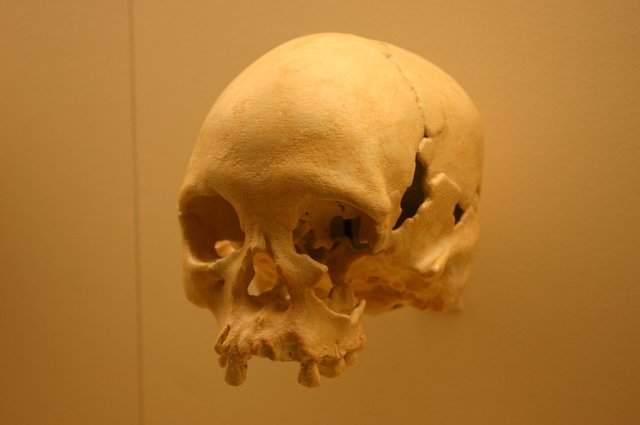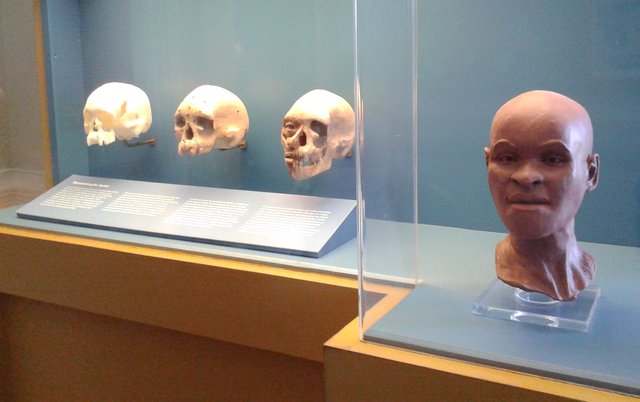COULD AFRICANS BE AMONG FIRST SOUTH AMERICANS?
THE PASS THROUGH THE BERING STRAIT
Today there is no discussion at all about that settlers of Siberia and North-East Asia used the Bering Strait to reach North America. But, could there have been other routes of colonization of America?
For any human group about 12,000 years ago or maybe 23.000 years ago it wouldn't have been so difficult to move from Asia to America. The accumulation of water in the form of ice in the polar ice caps due to glaciations reduced the amount of water in the oceans and forced the sea level to fall.

http://www.bradshawfoundation.com/news/origins.php?id=The-Peopling-of-the-Americas
Reduction in sea level showed a greater continental surface formed by lands that today are up to 130 meters below the sea surface. For the Siberian hunters, chasing a group of caribou or reindeer in their way to America would have been extremely easy and so they would have reached a new environment rich in resources that would allow them to enjoy great abundance. Physical features and genetical studies prove that Native Americans are related to Mongoloid people.
THE FOSSIL LUZIA, A CASE FOR THINKING
The archaeologist Annette Laming-Emperaire (October 22, 1917 - May 1977) found in Brazil in 1974, in a place called Lapa Vermelha, State of Minas Gerais; at a depth of 12 m human osseous remains. Among them, there was a skull in a very good condition that was dated between 10,000 and 12,000 years old.

De Ryan Somma from Occoquan, USA - Homo Sapiens 11,500 Years Old, CC BY-SA 2.0,
https://commons.wikimedia.org/w/index.php?curid=32824098
The finding itself was very important because it was by that time the oldest skull found in South America. Nevertheless, anthropological studies carried out by Dr. Walter Neves increased the bewilderment and importance of it.
The entire anthropological study indicated that it was anything but a Mongoloid Asian like skull. Everything indicates that the piece belongs to an individual that looks more like African or Australian Aborigine type.
Richard Neave, a forensic artist from the University of Manchester reconstructed Luzia's face this way:

The image was taken by Dornicke
https://commons.wikimedia.org/wiki/User:Dornicke
This finding leaves many questions open:
How long ago did these settlers arrive in America?
Would they come from Australia or Africa?
What happened to them?
Would they end up mixing with Asians descendants and diluting their blood? and would European settlers have seen if any, the traits of their African race in the aborigines and left no written record of it? Or on the contrary, were they extinguished by consanguinity or because of the most recent settlers?
Will there be a genetic trace in the current inhabitants of Brazil of these ancient cultures? Is it possible to find genetic markers that allow us to identify them?
Would it be possible to find some genes of these first inhabitants in some of the present native people of the Amazonian Forest?
How would the boats used by these first settlers have been? Will there exist in Africa or Australia archaeological vestiges of the ships that they could have used?
Is it possible to increase the findings in America in order to have enough evidence of the existence of these cultures?
The field of study of Anthropology, Paleontology, Archeology, Paleoanthropology, Population Genetics, Paleogenetics, Linguistics, Geology, and Ethnology among other sciences is really exciting. In the years to come, we will be delighted with the results of new researches, many of which are already being written.
@jfparr, thank you for supporting @steemitboard as a witness.
Click on the badge to view your Board of Honor.
Once again, thanks for your support!
Thank you Steemboard!